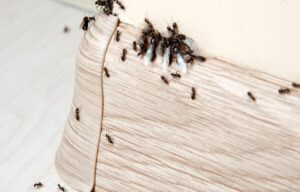Mosquito larvae are known as wrigglers and have a huge head and thorax. They are narrow and have an abdomen like a worm. The wrigglers hang below the water bodies and breathe air with the help of the tubes at the end of the abdomen.
Knowing a mosquito’s full life cycle is necessary to stop its manifestation. Knowing the life cycle will help pick the right pesticides to reduce mosquito growth. Choosing the services of Burke Pest Control will further reduce the menace of mosquitoes.
Life stages of a mosquito
Mosquito’s life cycle has four main stages such as:
- Egg: An egg is hatched when it comes in contact with water
- Larva: It is also called a wriggler and lives in water. Larva can breathe air and molt numerous times.
- Pupa; It is a stage before becoming an adult.
- Adult: Adults fly within a few weeks after the hardening of the body parts.
The adult is a flying insect, whereas the first 3 stages happen in water. The mosquitos that feed on humans and other insects are always female. Some other characteristics of a female mosquito are:
- After consuming the blood meal, female mosquitoes lay their eggs on watery soil. They can also lay eggs on plant bases that have water. These eggs can survive in dry conditions for some months.
- Eggs hatch on water surfaces, and a mosquito larva emerges.
- The larvae stay in water, feed, and develop into the third stage, a pupa or tumbler. The pupa or tumbler can stay on water surfaces but does not feed.
- The mosquitoes emerge from the pupal within a week in the pupal stage.
- This life cycle can take up to 15 days and even a month.
- Finally, the adult mosquitoes emerge on the water bodies and fly away to start their lifecycle.
Some facts about a mosquito’s life cycle
A mosquito belongs to the Culicidae family and can be found everywhere. It is a highly adaptable insect that can be seen on water surfaces made naturally or by humans. Apart from water surfaces, mosquitoes are also found in mines and on mountain peaks.
These insects are found in almost every home. They also dwell in backyards, gardens, and other outdoor spaces. Mosquitoes have long proboscis and scales on the veins of the wings. This feature is not present in other types of flies.
More than 176 types of mosquitoes are found in the United States of America. Only a few species cause diseases in humans and are dangerous for them. Around 3000 or more species of mosquitoes are found in other countries. While some cause diseases in humans, some other species degrade the quality of human lives.
Lifespan of mosquitoes
The lifespan of a mosquito depends on multiple factors. They include gender, species, and some environmental conditions. A male mosquito has a shorter lifespan of a few weeks than a female mosquito. Some female mosquitoes can stay in the winter season, even in a dormant state, and arrive in the spring to lay eggs.
Measures to reduce mosquitoes
Some tips must be followed to reduce the menace of mosquitoes, such as:
- Homeowners must remove sources of water where mosquitoes dwell, such as old tires, buckets, and water pots.
- Regular cleaning of gutters will reduce the population of mosquito
- Changing the outdoor pet bowls will keep away these stingy insects
Conclusion
These are the different stages of a mosquito’s life cycle. Understanding this insect’s life cycle will help us understand mosquito larvae. The pest control team has expertise and excellence in removing mosquitoes from any place. They control the population of these insects with powerful and safe solutions.



